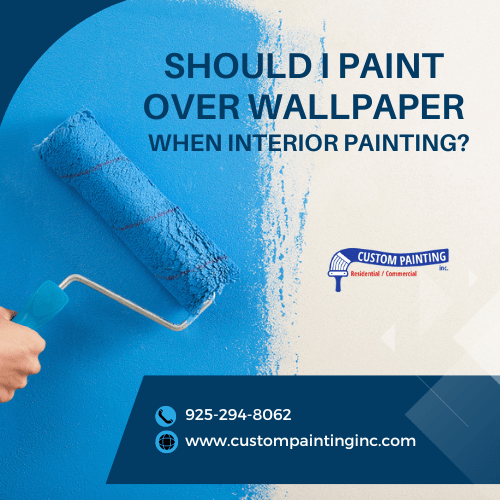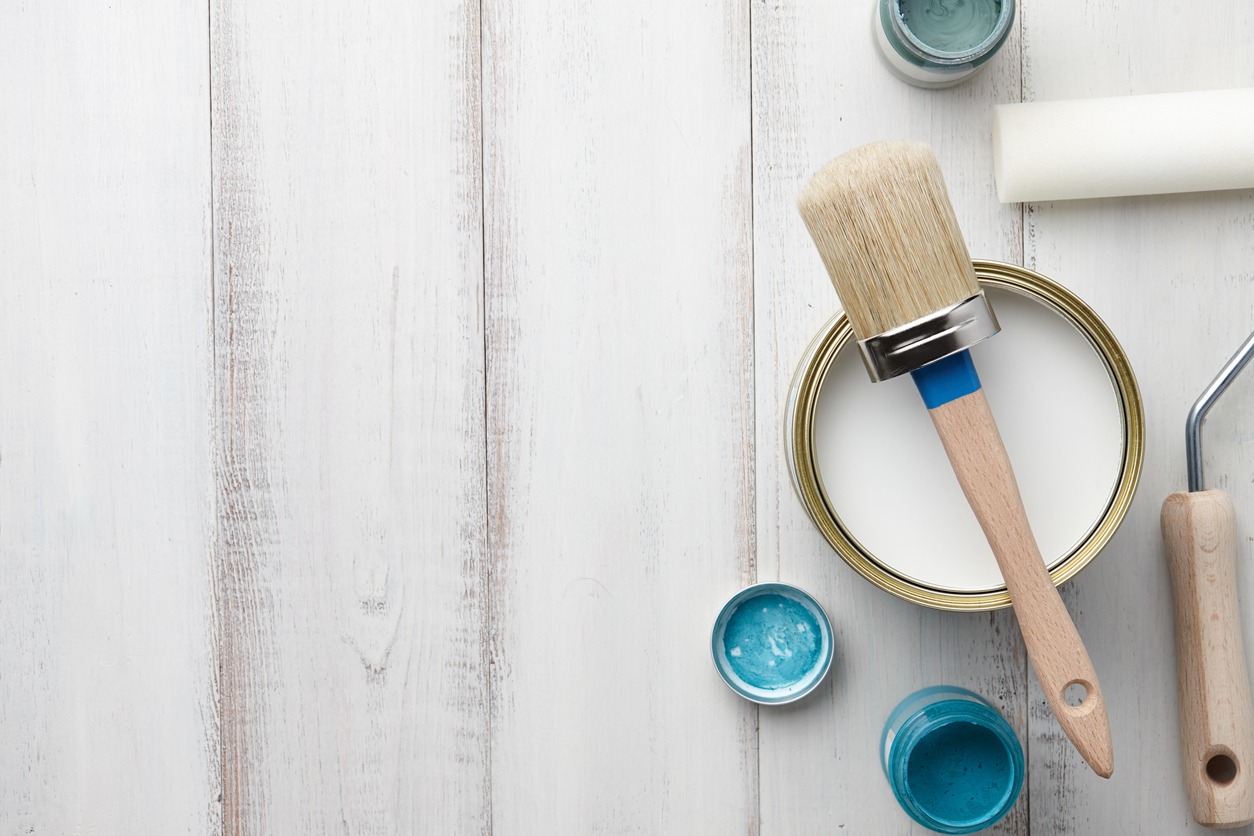When it comes to interior painting, one question often arises: Should you paint over wallpaper? This topic is a common concern for many homeowners looking to refresh their living spaces. While some believe it is a quick fix, others warn against potential pitfalls. Let us examine the pros and cons of painting over wallpaper so that you will know if this task should be done for the interior of your home.
Why Should You Paint Over Wallpaper?
Painting over wallpaper can be a practical solution for many homeowners. Here are several reasons why you might consider this approach:
- Time-saving: Removing wallpaper can be a time-consuming task. Painting over it allows you to achieve a fresh look more quickly.
- Cost-effective: By skipping the removal process, you can save on labor and material costs.
- Less mess: Wallpaper removal often involves water, adhesive, and scraping tools. Painting over it reduces the mess and cleanup time.
- Preserves wall condition: Sometimes, removing wallpaper can damage the wall surface. Painting over it can help preserve the integrity of the wall.
- Quick fix: If the wallpaper is in good condition and firmly attached, painting over it can be a simple and efficient solution.
Why You Shouldn’t Paint Over Wallpaper
Painting over wallpaper might seem convenient, but it can lead to several issues. Below are the reasons why you might want to avoid it:
- Peeling and bubbling: If the wallpaper is not securely attached, paint can cause it to peel or bubble, leading to an uneven finish.
- Visible seams and textures: Paint may not hide the seams or textures of the wallpaper, resulting in a less polished look.
- Difficult repairs: If the wallpaper becomes damaged after painting, fixing it can be more complicated than if the wallpaper had been removed.
- Moisture issues: Wallpaper can trap moisture, which might lead to mold or mildew growth behind the painted surface.
- Limited design options: Painting over wallpaper restricts your choices for wall treatments, especially if you want a different texture or finish.
Tips for Removing Wallpaper Before Painting
If you have already decided on removing the wallpaper on your home’s interior before painting, you can follow these tips to help you through the process:
Gather the Right Tools
Before you start, make sure you have all the necessary tools. You will need a wallpaper scraper, a scoring tool, a spray bottle, and a sponge. Having these items on hand will make the job easier and more efficient.
It’s also helpful to have a drop cloth to protect your floors and a bucket of warm water. These items can help you manage the mess and keep your workspace clean. Proper preparation can save you time and effort.
Test a Small Area First
Before committing to removing all the wallpaper, test a small section. This can help you understand how the wallpaper reacts to removal techniques. It will also give you an idea of the condition of the wall underneath.
If the wallpaper comes off easily, you can proceed with confidence. If not, you might need to adjust your approach or consider professional help. Testing a small area can prevent unnecessary damage and frustration.
Use a Scoring Tool
A scoring tool can make the removal process smoother. This tool creates small perforations in the wallpaper, allowing water and removal solutions to penetrate better. It can be especially useful for stubborn or thick wallpaper.
Be careful not to press too hard with the scoring tool, as it can damage the wall underneath. Gentle, even pressure will help you achieve the best results. A well-scored wallpaper will peel off more easily, saving you time and effort.
Apply Warm Water or Removal Solution
Spraying the wallpaper with warm water or a removal solution can help loosen the adhesive. Let the water or solution soak in for a few minutes before attempting to scrape. This can make the wallpaper easier to remove.
Use a sponge or cloth to apply the solution evenly. Avoid over-saturating the wallpaper, as too much moisture can damage the wall. A balanced approach will help you remove the wallpaper without causing additional problems.
Scrape Gently
When it comes time to scrape off the wallpaper, use gentle, steady motions. A wallpaper scraper or putty knife can be effective tools. Start at a seam or corner and work your way across the wall.
Patience is key during this step. Rushing can lead to gouges in the wall or missed spots of wallpaper. By taking your time and working carefully, you can achieve a clean, ready-to-paint surface.
Clean the Walls
After all the wallpaper is removed, it’s important to clean the walls thoroughly. Residual adhesive can interfere with paint adhesion. Use a sponge and warm, soapy water to wash down the walls.
Rinse the walls with clean water to remove any soap residue. Allow the walls to dry completely before you start painting. A clean, dry surface will help the paint go on smoothly and look its best.
Should You Hire Professionals for Wallpaper Removal?
If you think that you don’t have the expertise to remove wallpaper on your own, it would be better if you could just hire professionals for the job instead. Here are the reasons why you might want to consider bringing in experts:
- Expertise: Professionals have the skills and experience to handle different types of wallpaper and adhesives. They know the best techniques to use for a clean removal without damaging the walls.
- Time-saving: Removing wallpaper can be a time-consuming task, especially if you lack experience. Professionals can complete the job more quickly, allowing you to move on to painting or other projects sooner.
- Proper tools: Professionals come equipped with the right tools and materials. They use specialized equipment that can make the removal process more efficient and less messy.
- Damage prevention: Hiring experts reduces the risk of damaging your walls. They know how to handle tricky situations, such as wallpaper that has been painted over or adhered to with strong glue.
- Cleanup: Professionals often include cleanup as part of their service. This means you won’t have to deal with the mess of removed wallpaper and adhesive residues.
Conclusion
In conclusion, deciding whether to paint over wallpaper depends on various factors. If the wallpaper is in good condition and you need a quick fix, painting over it might be suitable. Weigh the pros and cons carefully before making your decision.
For professional wallpaper removal and painting services, contact Custom Painting, Inc. Call us at 925-294-8062 or fill out our Contact Form for more information.



